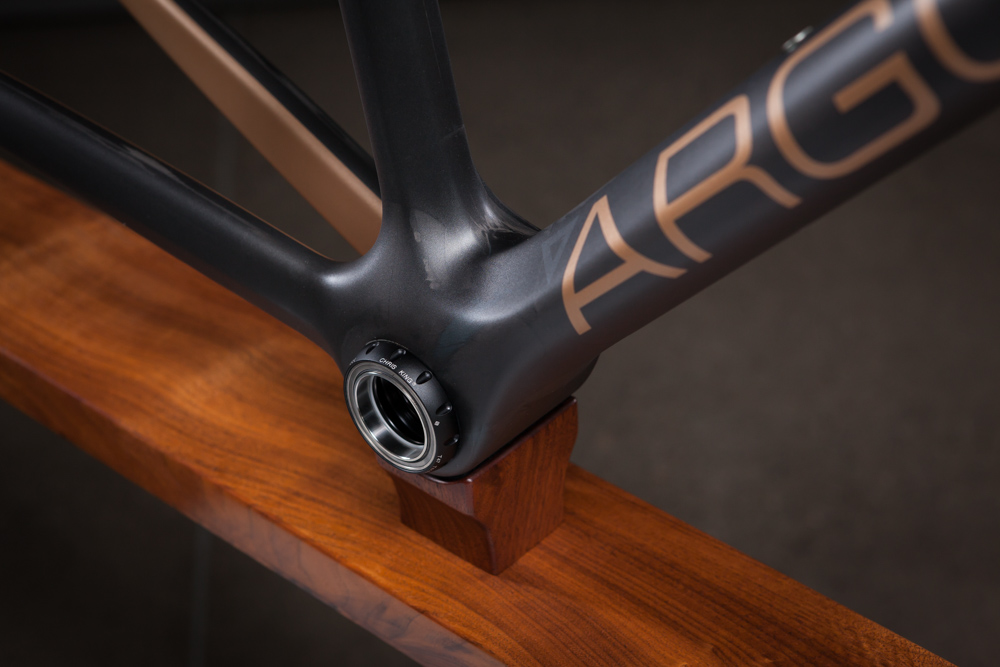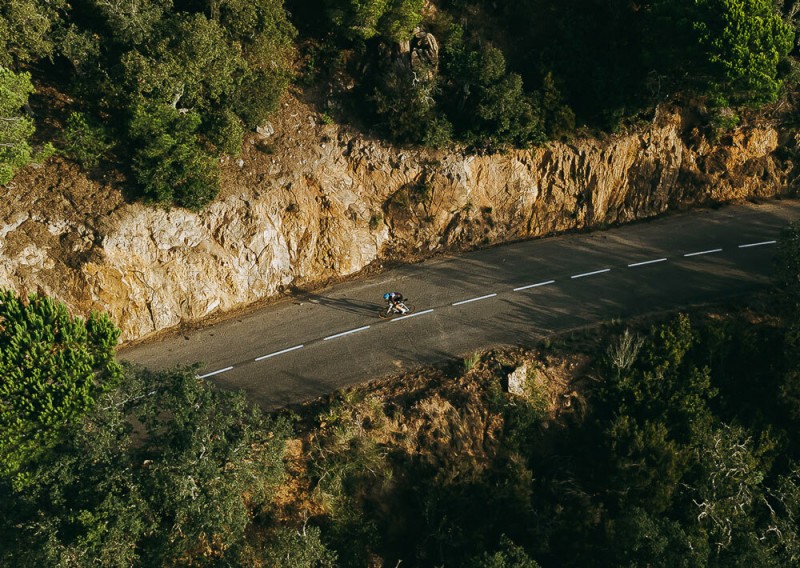Painting a carbon fiber bicycle frame is alchemy. The process is a combination of chemistry and artistry where each process has its own technique and potential pitfall. A good painter does more than deftly apply material. A good painter knows how to fix a flaw or misstep without having to go back to square one.
Matt Meehan has been painting Argonaut frames for the last three years and we are lucky to have him. Primarily he does amazing work with painstaking attention to detail. Nearly as important is his ability to correct an errant masking detail or surface flaw. The better the painter the bigger their bag of tricks.
Our paintwork has three primary goals: aesthetics, durability, and weight. Aesthetics and durability are obvious goals. Surprising, though, is the fact that the weight of paint on a frame can really add up. Old production carbon bikes in the 90’s used to have about 200 grams of Bondo on them alone, not to mention the additional 100 to 150 grams of paint. A liberal amount of clear coat on a frame can be more durable, but what’s the point of busting your ass to make a 750 gram road frame and then add 150 grams of paint?
Matt has the challenge of achieving very high aesthetic expectations while keeping a low mil thickness of base and clear coat. Too thin and the paint is prone to chipping and won’t hold up over time. His more complex paint schemes only add 60-80 grams of paint, and a design that primarily shows the raw carbon of the frame only adds 20-30 grams.

Matt Meehan – Painter
Paint adheres to a substate in one of two ways, either by mechanical or chemical bond. The first layer Matt applies to raw carbon is a thin layer of clearcoat. The substrate here is raw carbon, which is abraded with either Scotch-Brite or bead blasted with 240 grit glass bead. This creates tiny peaks and valleys in the substrate for the clear coat to grab ahold, creating a strong mechanical bond. This base layer of clear is then sanded to create an even surface for the color base coat to be applied.
We use Sikkens automotive paint, usually in a two stage process. The first stage is the base coat color and adheres to the first layer of clear coat through both a mechanical and chemical bond. The solvents in the base color interact with the clear coat fusing them together. The base color is then covered with a final clear coat, which sticks to the base color through only a chemical bond. Time is critical here because if more than 6 to 12 hours pass before applying clear coat the base coat will no longer chemically interact with the clear coat resulting in a poor bond between layers. The final clear coat seals the whole system and contains chemicals that block UV rays preventing color fade.
The look of matte clear coat over raw carbon is tough to beat on a high end carbon road bike, but I find most automotive matte clear coats laking. Over time they can actually buff out slowly turning from matte to semi gloss where the frame sees high wear. We’ve found a much better solution in a material called Cerakote, which is a ceramic coating baked onto the frame similar to powder coat. Unlike powder coating, Cerakote can be cured at a much lower temperature. Carbon fiber cannot be powder coated because the cure temperature is too high for carbon and would deform the material. Cerakote is primarily used in the coating of firearms because it goes on super thin and is very durable, nearly as durable as an anodized metal finish. Light and tough, Cerakote creates an excellent matte finish for bicycle frames.

Cerakote over raw carbon
My goal has always been to make the best road bike on the market. Frame design and composite engineering only get us part of the way there. Ultimately our bikes have to look great too. Matt’s work is some of the best in the bicycle industry and we are lucky to have him at the helm of the Argonaut paint shop.
Thanks for reading.




